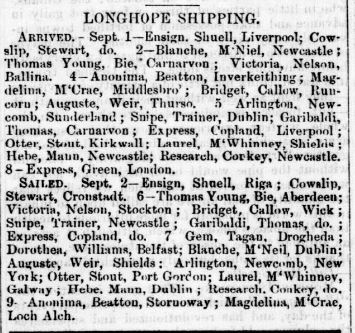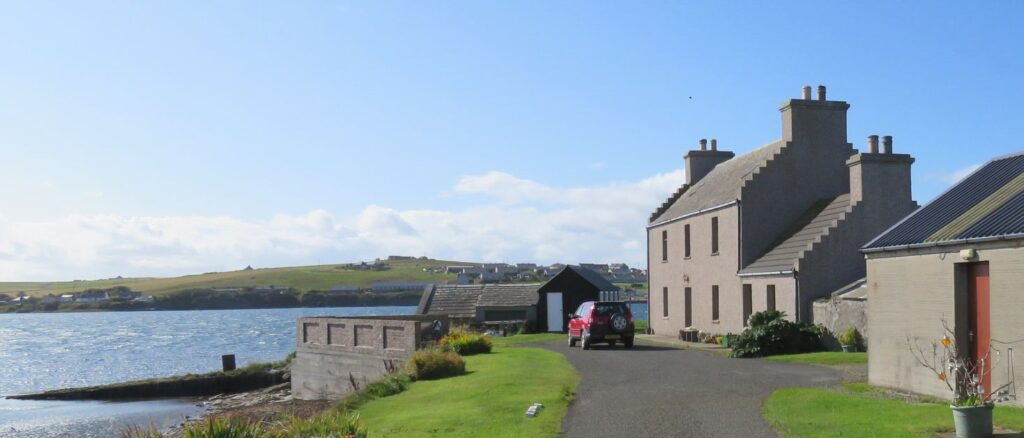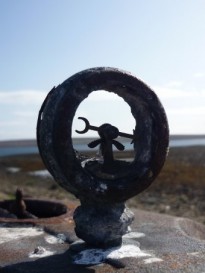With several ships a day regularly arriving in and leaving from Longhope, you’d think there might be a few licensed establishments for the refreshment of the sailors on board. Was this so?

This clipping from 1870 gives an idea of the number of ships arriving in and leaving from the anchorage at Longhope as they made their way round the north of Scotland. Busier in earlier years no doubt. Information given is: ship name, Master’s surname, port of origin or destination.
Evidence from the records
Writing in July 1841, the Rev Walter Weir, minister of Walls and Flotta, commented: “There are five licensed public-houses in Walls, principally intended for the use of the shipping which frequent the Longhope; but I am happy to say, that the sin of drunkenness, as well as of swearing, is now greatly reduced…”1Gordon, J. ed. The New Statistical Account of Scotland... Walls and Flotta, Orkney, Vol. 15, Edinburgh: Blackwoods and Sons, 1845, p. 79. University of Edinburgh, University of Glasgow. (1999) The Statistical Accounts of Scotland online service: https://stataccscot.edina.ac.uk:443/link/nsa-vol15-p79-parish-orkney-walls_and_flotta. This is from the New Statistical Account; disappointingly there is no similar information in the Old Statistical Account (1790s).
Censuses
The 1841 census for Walls, taken on 6th June, recorded four licensees only. They were: James Wright, South Ness, a publican; John Cromarty, Wing, a spirit dealer; Alexander Bain, Brims, farmer and spirit dealer; Margaret Thomson, North Ness, inn keeper. The fifth may be hidden under the occupation of grocer or merchant. That means there were at most two inns in my one-place study area, in Brims and at North Ness. Ten years later in the 1851 census Margaret Thomson was the only person described as a publican or spirit dealer. The population of Walls as a whole in the 1841 census was 1153 and 1223 in 1851.2Figures from Orkney Family History Society’s transcripts of both censuses. Adding on Fara and Flotta, the other two inhabited islands in the parish would give 1558 and 1664 for the two censuses. For comparison, Glasgow was reputed to have one tavern per 14 inhabitants in 1831.3See https://www.theglasgowstory.com/story/?id=TGSDA10
I wonder how many informal drinking places there were too. My x 3 great grandfather Walter Rosie or Ross reputedly had an inn of sorts at Doonaton (Downatown) and there are memories of another place along the shore at the Muirs. This map shows these places as well as the Ship Inn and others I mention above.
I’ve used “inn” in my title in a very broad sense though, technically, it was a place that provided food, drink and accommodation. Ale houses and dram shops, often unlicensed, served drink only. Such places appear to have flourished all the more after the Licensing (Scotland) Act, 1853, brought in much tighter regulation including closing at 11pm and on Sundays.4See http://gluedideas.com/content-collection/chambers-6/Forbes-Mackenzie-Act.html for example. Many sources state that closing time was 10pm but this did not come in until 1887 as far as I can see.
Licensing Court records
The earliest official record I’ve so far seen at the Orkney Archive is the Justice of the Peace Licensing Court Roll of Publicans’ Licenses [sic] for Whitsunday 1857 to Whitsunday 1858. There were just four applications from the parish of Walls and Flotta.

The applicants
The four who applied for licences in 1857 were: Margaret Thomson, North Ness, and Nicol Wishart, Ferryhouse, South Ness, both for an inn/hotel; James Gunn, Brims and Charles Simpson, Lochside, Flotta, both for a public house licence. All four applicants had previously held licences but this time the court refused James Gunn’s application and there was no application from him in the following years. Significantly perhaps, he was the only one with no supporter for his application. The Minister supported all three other applicants and a JP (Justice of the Peace) also backed Wishart’s application. (William Anderson was the minister of Walls at the time.)
This means therefore that in North Walls and Brims from May 1857 there was only one licensed establishment whereas there had been two for at least the previous year and probably longer. By the 1861 census, there were 597 people living in North Walls and Brims (more about them).
Who were the applicants in North Walls and Brims?
The 1841-1861 censuses provide some background. James Gunn was probably the 36-year-old born in Canisbay, Caithness, and farming 16 acres at Ferryhouse in Brims (1861 census). He was still a farmer there until at least 1901. With three windowed rooms Ferryhouse was slightly bigger than many houses (most had two or even one) so perhaps more scope for a public house of some sort. (Map showing Ferryhouse.) James Gunn was not in Brims in the 1851 census so I wonder if he took over Ferryhouse from Alexander Bain.
Margaret Thomson, mother and daughter, were innkeepers at the Ship Inn, North Walls, from at least 1841 right through to May 1884. Widowed in 1833, Margaret senior quite possibly ran the inn for around 30 years.5Deaths (OPR) Scotland, Walls, Orkney, 16 December 1833, THOMSON, Edward, 032/ 40 229. She was from Walls but was at Scarfskerry, Dunnet, Caithness when she had four of her children.6Baptisms (OPR), Walls, Orkney, 18 March 1775, SUTHERLAND, Margaret, 032/ 10 98; also children of Edward Thomson and Margaret Sutherland, Dunnet, Caithness, 1802-1810. She died in 1858 aged 86 and Margaret junior then took over, with the aid of a servant.7Deaths (CR) Walls, Orkney, 28 July 1858, SUTHERLAND or THOMSON, Margaret, 032/ 7; Census Scotland 1861-1881, Walls, Orkney, THOMSON, Margaret.
Thomasina, sister of Margaret junior, was at the inn in all censuses 1841-1881 though with no obvious role until “hotel keeper’s assistant” in 1881.8Census 1881, Walls, Orkney, 032/1 2/ 1. She was the wife and later widow of John Baikie.
Women and inns
The Thomsons were by no means the only women running inns or similar. Theresa Mackay’s article Women at Work: Innkeeping in the Highlands and Islands of Scotland 1790–1840 illustrates how critical their contribution to the local economy could be, describing them as “strategic businesswomen”. Well worth a read though the research excludes the northern isles.
South Walls
The inn at Ferryhouse, South Walls, continued until the late 1870s under three or four different licensees but the licence seems to have then been withdrawn.9Aberdeen Press & Journal, 1 March 1884, Local option experiment in Orkney, p 3 col 4. By the 1880-81 round of applications there was only Margaret Thomson junior in Walls. Captain John Menzies, a retired master mariner from Perthshire, later applied for a shop licence in South Walls. He was married to Charlotte Ross, daughter of James Ross, late merchant at North Ness.
The Ship Inn
This is the name most commonly given to the inn at North Ness; Historic Environment Scotland reckon that it is an early 19th century building.10See https://canmore.org.uk/site/179939/hoy-north-ness-ship-inn . Though the local newspapers The Orcadian and the Orkney Herald, are digitised (1854-1871 and 1888-1949 between them) the Inn and its tenants do not seem to feature much, partly due to the limited news from the districts, especially in the earlier years. Searches for Margaret Thomson, for example, found nothing beyond a death notice for Margaret senior. So, what follows is very anecdotal and a work in progress.

John Bremner wrote of the Ship Inn “it has been said that the ‘mercies’ here dispensed were of a more than potent brand; they were, as an old native of Flotta once remarked, ‘over-heated’, or doubly potent – if this is possible.”11Bremner, John (1997) Hoy the dark enchanted isle. Kirkwall: Bellavista Press. p.34
The Walls Kirk Session minutes in January 1841 include a case rather akin to what would now be called date rape, alleged to have taken place at the time of a ball “in Mrs Thomson’s North Ness”. With conflicting evidence from the two parties, the Session referred the matter to the Presbytery of Cairston. Kirk Session minutes do not record the outcome.
Ministers
In a very different mode, the Orkney Herald on 3rd September 1861 reported that the Rev Mr Stewart of the Free Church [St Andrews Orkney] preached “to a crowded and attentive audience” at the inn, North Ness, in August 1861.12Orkney Herald 3rd September 1861 p 3 col 3. This was the very start of the Free Church sending a preacher to North Walls (a kirk was built later). In the absence of any other sizeable public building, the inn would have been the obvious place to use, not least because the established Church of Scotland controlled the North Walls School and held services there from time to time.
Ten years later in the 1871 census, Francis Davidson, “assistant minister” was lodging at the Ship Inn. I’ve not so far found out much about him although his occupation, assistant, suggests Church of Scotland rather than Free Church. Like it or not, the inn was probably the only place where he could find accommodation.
After the Thomsons
Margaret Thomson’s last licence application was for the 1883-1884 year. She and her sister Thomasina then moved to Kirkwall and ran a lodging house or temperance hotel at 14 Victoria Street.13Census Scotland 1891, Kirkwall, Orkney, 021/ 2/ 1. David Partner’s, Kirkwall in the footsteps of Hossack (2018), Vol II, p 38, describes it as a temperance hotel.
In early 1884, JGM Heddle of Melsetter, the local laird, knowing that Margaret Thomson was vacating, issued voting papers asking local people if they wanted the Ship Inn licence to continue. In his accompanying letter he stated that:
it was an invidious thing for a landlord to take away a licence and expose himself to the insinuation of keeping a well-filled cellar himself, while seeking to deprive the poor man of his beer, and pointed out that in answering queries they had to consider the general good of the whole community, as well as the question of the shipping.
Aberdeen Press & Journal, 1 March 1884, Local option experiment in Orkney, p 3 col 4
From over 173 voting papers, there were 167 responses within 14 days.
| Leave the Ship Inn as it is now | 112 |
| Take away the spirit licence. leave porter and ale | 4 |
| Take away the licence and leave it a temperance hotel | 31 |
| Committee of ratepayers to put a suitable tenant into the house, subject to landlords approval, and to devote the surplus for the relief of local rates | 16 |
| Same as above with only porter and ale licence | 4 |
John Linklater and the Ship Inn
Local opinion being in favour of continuation, John Linklater, previously innkeeper at Herston, South Ronaldsay for sixteen years, took on the licence in May 1884. His tenancy lasted for the next eighteen years; there is an excellent photo of the inn in the 1890s on Historic Environment Scotland’s Canmore site. Two of John Linklater’s daughters married local Crockness men: Bella to John Gray and Betsy to John Wilson, Master Mariner.
But change came in April 1902. Linklater again applied for a licence, not for North Ness this time but for a public house in Herston, the premises where he had been prior to moving to Walls. Thomas Middlemore, owner of the Melsetter estate and thus most of Walls, had served notice on him to leave the North Walls property at Whitsunday (May) 1902. This was not, it was said, because of any fault to the applicant but because Middlemore wanted the inn run in a different way, probably putting in his own manager. Requests to extend the tenancy for six months in order to clear his stock or instead receive compensation had been refused. The Herston application was possibly short term for stock disposal but the Licensing Committee turned it down as there were already two licences in South Ronaldsay.14Orkney Herald, 16 April 1902, p 5 col 1; The Orcadian, 19 April 1902, p 5 col 3 & 4.
At the same Licensing Court meeting it was reported that Thomas Middlemore had withdrawn his application for a licence for the Ship Hotel [sic], Longhope, as he intended to convert it into a post office.15The Orcadian, 19 April 1902 p5 col 4. Middlemore bought the Melsetter estate in 1898 so maybe it was the new broom effect.
At Whitsunday 1902 (18 May) therefore, the Ship Inn, North Ness, Walls, closed its door for the last time and by May 1906 (probably earlier) it was a post office and shop. It is now a family home.
After 1902
About the same time as the Ship Inn was closing, Middlemore had a property built at South Walls, intended for use as a hotel. Over two years passed with no licensed premises at all in Walls, North or South. Then in November 1904 Robert Johnston Gibson, Broadford, Skye, applied for a six-month licence for what was initially (and confusingly) known as the Ship Inn, South Walls. The name later changed to the Longhope Hotel and it still operates as the Royal Hotel.
Despite some opposition principally, in public at least, from James Russell, minister of Walls, a licence was granted and a new era began.16Orkney Herald, 26 October 1904, p 4 col 4 & 5.
Lyness
With the development of Lyness as a naval base in two world wars and a huge, temporary, increase in population, there was inevitably a successful application from the Camp manager. Post-war there was a licensed social club at Lyness (“the Club”) which may have closed around the late 1970s. The Hoy Hotel at Lyness opened around the same period, in the unrealised hope of benefitting from oil industry developments in the neighbouring island of Flotta. It is currently closed for maintenance so once again the folk of North Walls are inn-less.
Written for the Society for One-Place Studies blog prompt #OnePlaceInns. (A shorter and slightly different version also appeared in the Orkney Family History Society’s Sib Folk News in March 2022.) As always, I’d be very grateful for any corrections and additions either in the Comments below or message me. Thanks to one person who has already provided an update.

